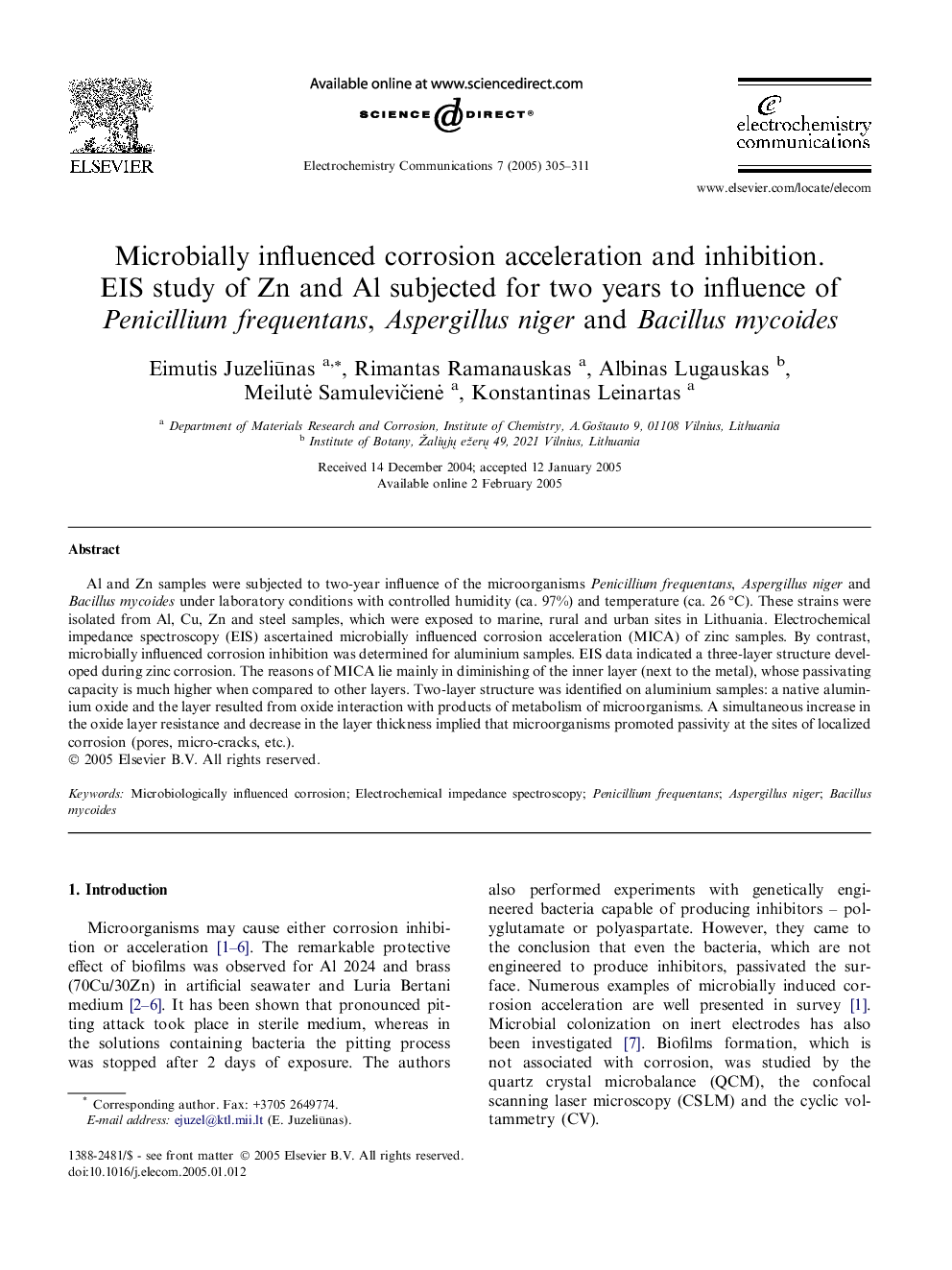| Article ID | Journal | Published Year | Pages | File Type |
|---|---|---|---|---|
| 10266994 | Electrochemistry Communications | 2005 | 7 Pages |
Abstract
Al and Zn samples were subjected to two-year influence of the microorganisms Penicillium frequentans, Aspergillus niger and Bacillus mycoides under laboratory conditions with controlled humidity (ca. 97%) and temperature (ca. 26 °C). These strains were isolated from Al, Cu, Zn and steel samples, which were exposed to marine, rural and urban sites in Lithuania. Electrochemical impedance spectroscopy (EIS) ascertained microbially influenced corrosion acceleration (MICA) of zinc samples. By contrast, microbially influenced corrosion inhibition was determined for aluminium samples. EIS data indicated a three-layer structure developed during zinc corrosion. The reasons of MICA lie mainly in diminishing of the inner layer (next to the metal), whose passivating capacity is much higher when compared to other layers. Two-layer structure was identified on aluminium samples: a native aluminium oxide and the layer resulted from oxide interaction with products of metabolism of microorganisms. A simultaneous increase in the oxide layer resistance and decrease in the layer thickness implied that microorganisms promoted passivity at the sites of localized corrosion (pores, micro-cracks, etc.).
Keywords
Related Topics
Physical Sciences and Engineering
Chemical Engineering
Chemical Engineering (General)
Authors
Eimutis JuzeliÅ«nas, Rimantas Ramanauskas, Albinas Lugauskas, MeilutÄ SamuleviÄienÄ, Konstantinas Leinartas,
